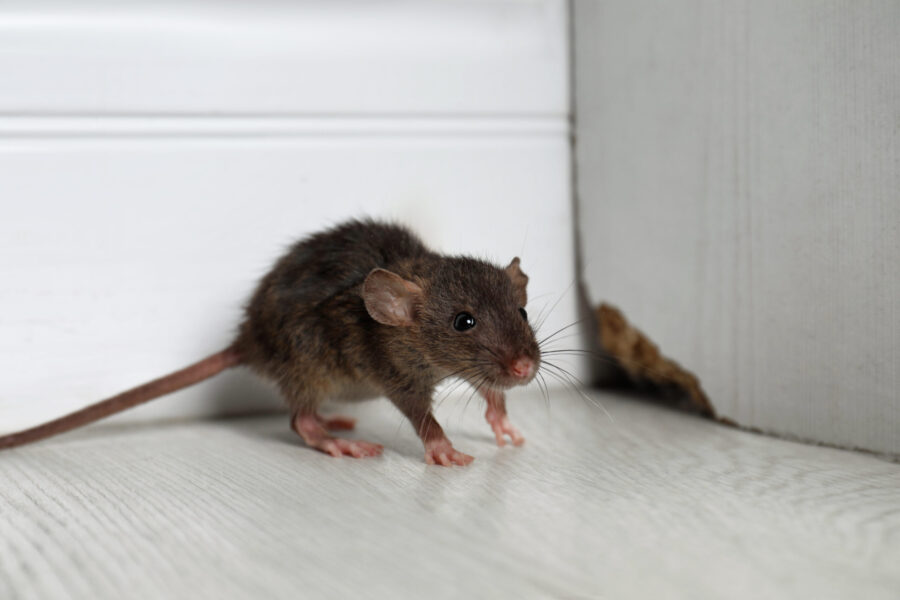AI Pest Control in Food Logistics: Revolutionizing Food Safety
Share
In the fast-paced world of food logistics, maintaining a clean and pest-free environment is paramount. The introduction of AI pest control in food logistics is transforming how companies handle this critical aspect of their operations. By leveraging advanced technologies, businesses can now ensure food safety and operational efficiency like never before. This article delves into the fascinating world of AI-driven pest control solutions and their impact on the food logistics industry.

The Importance of Pest Control in Food Logistics
Before diving into the role of AI, it's essential to understand why pest control is crucial in food logistics. Pests pose a significant threat to food safety and quality. They can cause contamination, leading to potential health risks for consumers and significant financial losses for companies. Pest infestations can also damage a company's reputation, resulting in a loss of trust and business.
Traditional pest control methods often involve regular manual inspections and the use of chemical pesticides. While these methods can be effective, they are not always efficient or sustainable. This is where AI pest control comes into play, offering innovative solutions that address these challenges.
How AI is Transforming Pest Control
AI technologies are revolutionizing pest control by providing real-time monitoring, predictive analytics, and automated responses. Here's how AI is making a difference:
Real-time Monitoring
With AI-driven sensors and cameras, businesses can monitor their facilities 24/7. These devices can detect pest activity as it happens, allowing for immediate action. This constant surveillance ensures that no pest goes unnoticed, reducing the risk of infestations.
Predictive Analytics
AI systems can analyze vast amounts of data to identify patterns and trends in pest behavior. By doing so, they can predict potential infestations before they occur. This proactive approach enables businesses to address pest issues before they become severe, saving time and resources.
For more on predictive pest alerts, you can visit this insightful article by TrapX.
Automated Responses
AI-powered systems can trigger automated responses when pests are detected. For example, they can release non-toxic repellents or trigger traps to capture pests. This automation minimizes the need for manual intervention and reduces the reliance on chemical pesticides.
Benefits of AI Pest Control in Food Logistics
Implementing AI pest control in food logistics offers numerous benefits, including:
Enhanced Efficiency
AI systems streamline pest control processes, reducing the need for manual inspections and interventions. This efficiency allows businesses to focus on other critical aspects of their operations.
Improved Food Safety
By minimizing pest infestations, AI pest control enhances food safety and quality. This improvement can lead to increased consumer trust and satisfaction. For more on AI's role in maintaining hygiene, explore AI pest tech for commercial hygiene.
Cost Savings
While the initial investment in AI technology may be significant, the long-term cost savings are substantial. Businesses can save on labor costs, reduce product waste, and avoid fines associated with food safety violations.
Challenges and Considerations
Despite its advantages, adopting AI pest control in food logistics is not without challenges. Companies must consider factors such as the cost of implementation, data privacy concerns, and the need for employee training. Additionally, integrating AI systems with existing infrastructure can be complex.
Businesses must also stay informed about the latest trends and advancements in AI pest control to remain competitive. For insights into AI trends in warehousing, check out this informative article.
Conclusion
The integration of AI pest control in food logistics is a game-changer for the industry. By enhancing efficiency, improving food safety, and reducing costs, AI technology offers a sustainable solution to pest management challenges. As technology continues to evolve, businesses must adapt and embrace these innovations to stay ahead of the curve.
For further reading on pest control technology in the food industry, consider visiting McCloud Services.

FAQ Section
What is AI pest control?
AI pest control involves using artificial intelligence technologies to monitor, predict, and respond to pest activity in real-time.
How does AI improve food safety in logistics?
AI enhances food safety by providing real-time monitoring, predictive analytics, and automated responses to minimize pest infestations.
What are the challenges of implementing AI pest control?
Challenges include the cost of implementation, data privacy concerns, the need for employee training, and integrating AI systems with existing infrastructure.
This article contains affiliate links. We may earn a commission at no extra cost to you.
